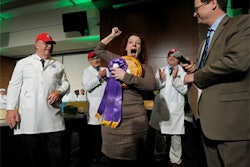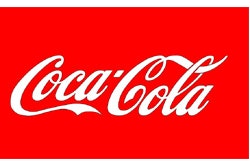.jpg?n=6270) By SARAH, BATTAGLIA, Energy Curtailment Specialists, Inc.
By SARAH, BATTAGLIA, Energy Curtailment Specialists, Inc.
Demand response has become a popular program among a variety of different buildings and organizations. For years, utility companies have relied on this program to protect the electric grid in times of extreme demand. During peak hours, electricity consumption soars, making it difficult for utilities to supply a sufficient amount of power to all consumers. If it wasn’t for demand response, many would be left in complete darkness. To top it off, those who participate will receive financial compensation for temporarily reducing their electricity during these peak hours. So, which organizations are ideal candidates for demand response?
Factories & Industrial Facilities
Most manufacturers and other industrial facilities consume a substantial amount of energy from their large equipment and machinery. With a high level of consumption, a facility is able to reduce more electricity, allowing them to receive a more generous payment.
These large facilities have several ways of curtailing their energy during peak hours. Most facilities will turn off lights, pumps, fans, and other electrical appliances in vacant areas prior to a demand response event. Adjusting the thermostat to reduce air conditioning or heating, reducing production or shifting to non-event hours, and limiting the use of air compressors during an event are also helpful measures to take. Demand response events are a great time for maintenance or staff meetings, but if operations cannot be stopped, running on-site generators is a perfect way to maintain production while still reducing demand on the grid.
Hospitals & Healthcare Facilities
Hospitals in the U.S. consume an average of roughly 27.5 kWh per square foot each year, with lighting, heating, and hot water accounting for about 60 percent. With such high electricity use, hospitals and other healthcare facilities are perfect candidates for participating in demand response.
Pre-chilling is an effective procedure these facilities can take. Reducing the thermostat setting to 60°-63° until 15 minutes before the event, and then raising the temperature to 85° during the event will keep the building cool without having to run the air conditioner.
Other reduction strategies include running on-site generators, turning off or dimming lights wherever possible, taking extra elevators offline, and turning off dishwashers, electric ovens, fans, and electric heaters.
Schools & Universities
A typical school uses about 10 kWh of electricity per square foot each year, with most of it being used for space heating, cooling, and lighting. Office equipment like computers and copiers tend to consume a substantial amount of electricity as well, even in sleep mode.
Generators and the pre-chilling procedure can also be used in schools and universities. Additionally, switching to natural light can be quite effective. Opening the blinds and turning off lighting fixtures in classrooms, hallways, gymnasiums, and cafeterias will maximize effectiveness. Shutting down or reducing any unnecessary fans, pumps, and motors, and turning off any other additional appliances that are not absolutely necessary for students, faculty, or staff will also help.
Data Centers
Data centers are notorious for using extreme amounts of energy. In fact, estimates show that these facilities represent 1.5 percent of all U.S. electricity consumption. Computer load and HVAC systems are typically the main consumers of energy in these facilities, making those systems the ultimate targets for energy savings.
Operating backup generators is the most popular reduction strategy for data centers. In addition to taking load off the grid, periodically running these generators is beneficial for conducting routine maintenance.
If a company operates multiple data centers, another strategy would be to shift load from the location where electricity is in high demand to one where it is at normal levels. With today’s sophisticated technology, this should be a fairly easy process.
Commercial Properties
Commercial properties, including office towers and large shopping centers, can be very successful when participating in demand response. Lighting, heating, and cooling account for over half the electricity consumed in these facilities.
Property managers will be successful in curtailing electricity by pre-chilling, turning off or dimming lights in hallways and vacant rooms, taking extra elevators offline, turning off vending machines, and reducing the speed of exhaust fans, ventilation systems, and chiller motors. Additionally, enlisting tenants to turn off office equipment such as computers, copiers, microwaves, electric ovens, and space heaters will aid in the process of removing electric load from the grid.
With any facility, it is important to begin shutting things down 15 minutes prior to a demand response event, then waiting 10 minutes after the event to start turning things back on.
Other organizations that may be able to participate in demand response include hotels, assisted living facilities, recreational facilities (especially those with ice rinks), and large retail stores. To receive more information on demand response and to learn how your company can participate, please click here. To ensure your facility earns the maximum payment available, their consultants will provide you with a personalized reduction plan and answers to any questions you may have.
What’s your take? Please feel free to comment below!






















